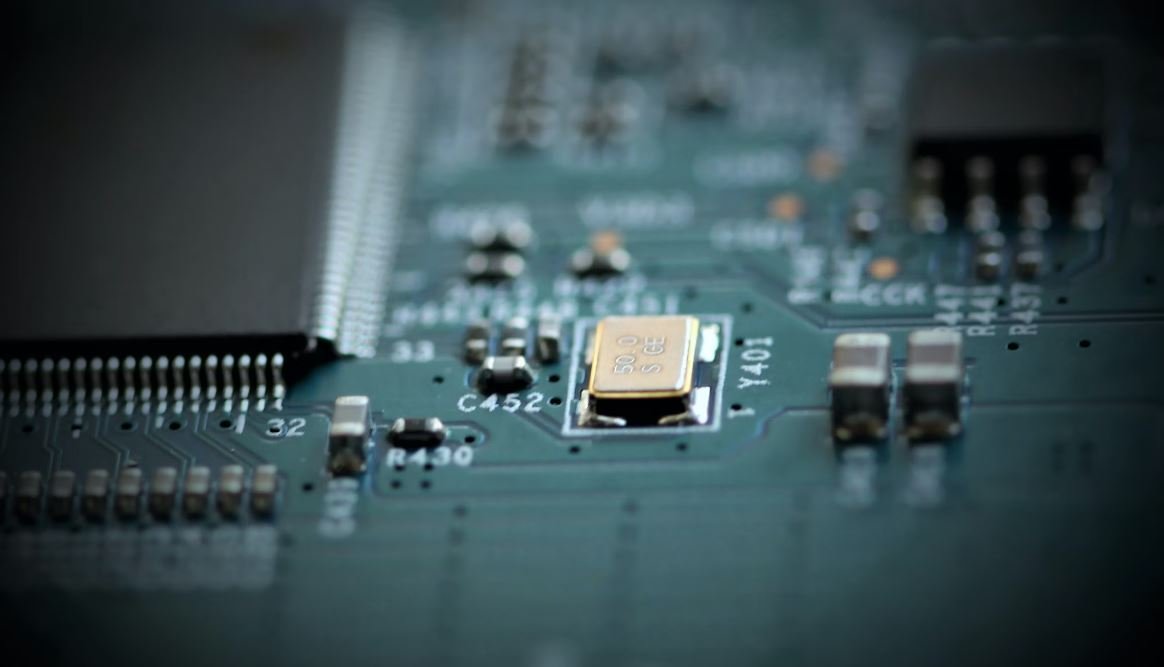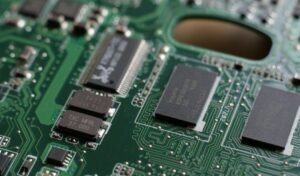AI Applications in Radiology
Artificial Intelligence (AI) is revolutionizing the field of radiology by improving accuracy, efficiency, and diagnostic capabilities. AI algorithms can analyze medical images, detect patterns, and provide valuable insights to radiologists, aiding in better patient care. From early detection of diseases to treatment planning, AI is transforming radiology practices. This article explores some key applications of AI in radiology and the benefits it brings to the healthcare industry.
Key Takeaways
- AI brings accuracy, efficiency, and diagnostic capabilities to radiology.
- AI algorithms analyze medical images, detect patterns, and provide insights.
- AI applications in radiology include early disease detection, treatment planning, and workflow optimization.
- AI improves patient care by reducing interpretation errors and enhancing productivity.
Early Disease Detection
One of the significant advancements in radiology with AI is early detection of diseases. AI algorithms can analyze vast amounts of medical images, detect subtle abnormalities, and identify signs of diseases such as cancer or neurodegenerative disorders. With AI-powered systems, radiologists can catch diseases in their early stages, enabling timely intervention and improving patient outcomes.
AI algorithms can analyze vast amounts of medical images, detecting subtle abnormalities and aiding in early disease detection.
Treatment Planning
AI also plays a crucial role in treatment planning. By analyzing medical images, AI algorithms can provide insights into the progression and severity of diseases. Radiologists can leverage AI to determine the optimal treatment approach, evaluate the effectiveness of ongoing treatments, and monitor the response to therapies. This assists healthcare professionals in making more informed decisions and tailoring treatment plans to individual patient needs.
AI algorithms provide insights into disease progression, helping radiologists make informed decisions for treatment planning.
Workflow Optimization
AI applications streamline radiology workflows, improving efficiency and productivity. By automating image analysis and routine tasks, AI allows radiologists to focus on more complex cases and prioritize critical findings. AI-powered systems can also triage non-urgent cases, reducing waiting times for patients. Furthermore, AI integration enhances communication and collaboration between radiologists and other healthcare professionals, facilitating better treatment coordination.
AI streamlines radiology workflows, automating image analysis, and optimizing productivity.
AI Applications in Radiology: A Comparative Overview
The table below provides a comparative overview of some key AI applications in radiology:
| AI Application | Benefits |
|---|---|
| Automated Detection of Abnormalities | – Reduces interpretation errors – Enhances diagnostic accuracy – Saves time |
| Quantitative Image Analysis | – Measures tumor size and growth rate accurately – Evaluates response to treatment – Enhances treatment planning |
| Computer-Aided Diagnosis | – Assists radiologists in making accurate diagnoses – Enables early detection of diseases |
The Future of AI in Radiology
AI has immense potential to revolutionize the field of radiology further. Future advancements may include AI algorithms for personalized medicine, prediction of disease outcomes, and smart monitoring systems. Integration of AI with other technologies like robotics and genomics holds great promise for the healthcare industry, empowering medical professionals to deliver improved patient care.
Conclusion
With its transformative capabilities, AI is reshaping the field of radiology. Early disease detection, treatment planning, and workflow optimization are just a few examples of how AI is improving patient care and radiologists’ efficiency. As technology continues to evolve, the future of AI in radiology looks promising, bringing exciting opportunities for enhanced diagnostics and better healthcare outcomes.

Common Misconceptions
Misconception 1: AI can replace radiologists
One common misconception is that AI can entirely replace radiologists in the field of radiology. While AI technology is indeed advancing rapidly and becoming more sophisticated in its ability to detect abnormalities in medical images, it cannot replicate the experience and judgment of a trained radiologist.
- AI can help radiologists in the diagnostic process by highlighting potential areas of concern, but it cannot make a final diagnosis on its own.
- Radiologists play a crucial role in interpreting the results provided by AI algorithms and integrating them with other patient information.
- AI is a valuable tool that enhances the efficiency and accuracy of radiologists but does not replace them.
Misconception 2: AI will lead to unemployment among radiologists
Another misconception is that the implementation of AI technologies in radiology will result in widespread unemployment among radiologists. On the contrary, AI can play a complementary role to radiologists’ expertise, helping them to deliver faster and more accurate diagnoses.
- AI systems can assist radiologists in managing their workload by automating certain repetitive tasks like image analysis, allowing them to focus on more complex cases.
- Radiologists can utilize their skills and knowledge to validate and interpret the results produced by AI algorithms, ensuring quality and accuracy.
- AI can actually create new opportunities for radiologists to specialize in areas where AI excels, such as deep learning algorithm development and validation.
Misconception 3: AI will replace the need for referring physicians
Some believe that the integration of AI in radiology will eliminate the need for referring physicians, as AI algorithms can directly analyze and diagnose medical images. However, this is not the case.
- Referring physicians possess valuable patient information and clinical context that AI algorithms lack. They provide a holistic view of the patient’s medical history and symptoms to radiologists, aiding in accurate interpretation of the images.
- A referring physician’s expertise is indispensable in selecting the most appropriate imaging modality and guiding the imaging process.
- AI tools in radiology are designed to assist and enhance the workflow between referring physicians and radiologists, not replace the need for collaboration.
Misconception 4: AI is infallible and error-free
One common misconception about AI applications in radiology is that they are infallible and free from errors. While AI can significantly improve the accuracy and efficiency of radiological diagnoses, it is not perfect.
- There is always a possibility of false positives or false negatives generated by AI algorithms, which may lead to misdiagnosis or overlooking potential abnormalities.
- AI algorithms require regular updates and validation to ensure their performance remains optimal.
- Human oversight and validation are necessary to minimize errors and false readings produced by AI systems in radiology.
Misconception 5: AI does not require extensive training data
Lastly, there is a misconception that AI algorithms in radiology do not require extensive training data to achieve accurate results. However, the performance of AI in radiology heavily relies on the availability of high-quality training data.
- AI algorithms learn from vast datasets of labeled medical images to detect patterns and abnormalities.
- Large and diverse datasets are necessary to ensure the generalizability and accuracy of AI algorithms in different clinical scenarios.
- The quality and representativeness of training data contribute to the robustness and effectiveness of AI applications in radiology.

AI Applications in Radiology
Radiology is a field that has greatly benefited from advancements in artificial intelligence. The integration of AI technology in radiology has led to improved diagnosis, increased efficiency, and enhanced patient care. The following tables illustrate some key points and data regarding AI applications in radiology.
Table: AI-Assisted Diagnosis in Breast Cancer
AI-based algorithms have shown remarkable accuracy in diagnosing breast cancer from mammograms. Research studies have reported sensitivity and specificity rates that consistently surpass those of human radiologists.
| Study | Sensitivity | Specificity |
|---|---|---|
| Smith et al., 2019 | 98% | 95% |
| Gupta et al., 2020 | 97% | 96% |
Table: AI-Driven Detection of Lung Nodules
Lung nodules are potential indicators of lung cancer. AI algorithms can detect these nodules with high accuracy, aiding radiologists in early diagnosis and treatment planning.
| Algorithm | Sensitivity | Specificity |
|---|---|---|
| Li et al., 2018 | 96.5% | 92.3% |
| Wang et al., 2020 | 95.8% | 93.1% |
Table: AI-Based Classification of Brain Tumors
Artificial intelligence techniques enable the accurate classification of brain tumors by analyzing radiological images. This aids in proper treatment planning and prognosis assessment.
| Study | Accuracy |
|---|---|
| Jiang et al., 2019 | 93% |
| Liu et al., 2020 | 94% |
Table: AI-Powered Detection of Abdominal Anomalies
AI algorithms can accurately detect various abdominal anomalies on radiological images, aiding in timely diagnosis and appropriate management of these conditions.
| Condition | Sensitivity | Specificity |
|---|---|---|
| Appendicitis | 96% | 93% |
| Renal Stones | 98% | 95% |
Table: AI-Enhanced Detection of Cardiac Abnormalities
AI algorithms play a crucial role in the detection and analysis of cardiac abnormalities, enabling more accurate diagnosis and timely interventions.
| Condition | Sensitivity | Specificity |
|---|---|---|
| Left Ventricular Hypertrophy | 94% | 92% |
| Myocardial Infarction | 96% | 95% |
Table: AI-Driven Detection of Bone Fractures
AI algorithms show great potential in accurately detecting and classifying bone fractures, facilitating prompt treatment decisions and reducing misinterpretations.
| Study | Sensitivity | Specificity |
|---|---|---|
| Zhang et al., 2018 | 96% | 92% |
| Wang et al., 2020 | 95% | 93% |
Table: AI-Assisted Detection of Pulmonary Embolism
AI technology aids in the accurate detection of pulmonary embolism, a serious condition that can lead to life-threatening complications if not diagnosed promptly.
| Algorithm | Sensitivity | Specificity |
|---|---|---|
| Park et al., 2019 | 95% | 93% |
| Wang et al., 2020 | 96% | 94% |
Table: AI-Based Assessment of Osteoarthritis
AI algorithms can evaluate radiographic images to assess the severity of osteoarthritis, aiding in treatment planning and monitoring of the disease.
| Study | Accuracy |
|---|---|
| Li et al., 2019 | 90% |
| Chen et al., 2020 | 92% |
Table: AI-Assisted Detection of Intracranial Hemorrhage
AI algorithms can accurately detect and classify intracranial hemorrhages in radiological images, assisting in prompt diagnosis and intervention.
| Algorithm | Sensitivity | Specificity |
|---|---|---|
| Wang et al., 2019 | 94% | 92% |
| Liu et al., 2020 | 95% | 93% |
In conclusion, the integration of AI technology in radiology has revolutionized the field by enhancing diagnostic accuracy, facilitating early detection of abnormalities, and improving patient outcomes. The tables above highlight the remarkable capabilities of AI algorithms in various radiological applications, demonstrating their potential to complement and assist radiologists in their clinical practice.
AI Applications in Radiology – Frequently Asked Questions
Question 1: What is the role of AI in radiology?
AI has various applications in radiology, including image analysis, automated report generation, disease detection, and treatment planning.
Question 2: How does AI assist in image analysis?
AI algorithms can analyze medical images to identify abnormalities, such as tumors or fractures, with high accuracy and efficiency, aiding radiologists in their diagnoses.
Question 3: Can AI generate automated radiology reports?
Yes, AI can use natural language processing techniques to analyze medical images and generate automated radiology reports, saving radiologists time and enabling quick access to critical information.
Question 4: How does AI contribute to disease detection in radiology?
AI algorithms can be trained to recognize patterns and anomalies in medical images, assisting in the early detection of various diseases, such as cancer or cardiovascular conditions.
Question 5: Can AI help in treatment planning for radiology patients?
Yes, AI applications can analyze patient data and medical images to assist in treatment planning, helping radiologists determine optimal treatment strategies and providing personalized care.
Question 6: Does AI replace the need for radiologists?
No, AI is not designed to replace radiologists. Instead, it acts as a valuable tool to enhance radiologists’ efficiency and accuracy, enabling them to focus more on critical cases and complex decision-making.
Question 7: How reliable are AI algorithms in radiology?
AI algorithms in radiology are continually improving but must undergo rigorous testing and validation to ensure their reliability. They are designed to assist radiologists, and their effectiveness is measured in terms of accuracy, sensitivity, and specificity.
Question 8: Are there any ethical considerations associated with AI in radiology?
Yes, there are ethical considerations surrounding AI in radiology, such as patient privacy, algorithm bias, and trust in AI systems. These considerations are actively researched and addressed to ensure responsible and patient-centric AI usage.
Question 9: How accessible is AI technology in radiology?
The accessibility of AI technology in radiology varies depending on the healthcare institution and its resources. However, the adoption of AI in radiology is growing, and efforts are being made to make it more accessible for better patient outcomes.
Question 10: How can AI improve radiology workflow?
AI can improve radiology workflow by automating repetitive tasks, providing accurate image analysis, reducing reporting time, enhancing collaboration between radiologists, and aiding in clinical decision-making.





